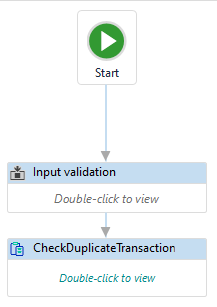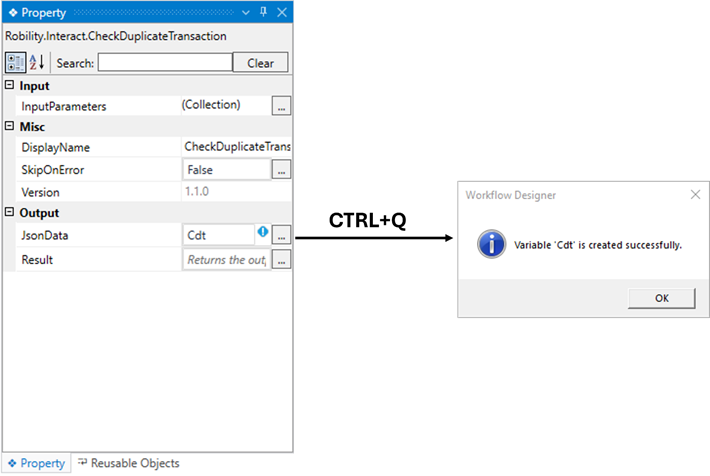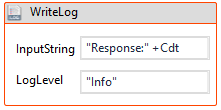This activity helps the user check for duplicate transactions among those that
have already been indexed.
Technical Reference
|
INPUT |
InputParameters: This parameter helps you to provide the “inputs” that are required to check against the fields in the transactions during the execution. This parameter accepts collection of argument types. |
|
|
MISC |
DisplayName: Displays the name of the activity. The activity name can be customized, which aids in troubleshooting. |
|
|
SkipOnError: Specify the "Boolean" value as "True" or "False." True: Continue executing the workflow regardless of any errors thrown. False: Halt the workflow if it encounters any errors. None: If the option is left blank, the activity will, by default, behave as if "False" were chosen. |
||
|
Version: It indicates the version of the feature being used. |
||
|
OUTPUT |
JsonData: It helps to view the response as “status” from the service for created transaction. It returns in the values in “String” datatype. |
|
|
Result: It provides the ability to view the execution status of the activity. It returns values in "Boolean."
True: Indicates that the activity has been executed successfully without any errors. False: Indicates that the activity has been unsuccessful due to an unexpected error being thrown. |
* Represents mandatory fields to execute the workflow
Here’s an example of how the activity works –
In the following example, I am continuing from the “AddTransaction” activity in the
example 1. Here I am checking whether there are any duplicates in the transaction.
I am utilizing the “Project” configured in the use case. To get a detailed understanding,
click here.
Steps to execute a bot:
1. Create a solution for building a workflow or open an existing solution.
2. Drag and drop the "CheckDuplicateTransaction" activity onto the designer
pane and set it as the “Start Node.”
3. Navigating to the “InputParameters” in the properties to provide the input
to check the duplicates.
a. In my case, the transactions contain duplicate values at the “RequestID”
field.
b. Hence, I am providing the input as “RequesID” field name as value.
c. In the value, I am entering the value as “REQ0021”, since the value
has been duplicated.
4. Next, navigating to the “JsonData” in the properties to declare and
view the response.
a. There are two ways to declare a variable,
b. Method 1 – Click on the "JsonData" property within the
"CheckDuplicateTransaction" activity and enter the variable name.
In this case, we are using " CDT." Then, press "Ctrl+Q," which is a
shortcut key to create a variable.
c. Method 2 - Click on the Variables pane and enter the name
"CDT" Then, in the "Variable Types" column, select "String" from
the dropdown menu.
5. You can add the “Writelog” activity to view the output of the
“CheckDuplicateTransaction” activity.
Below is a sample of the output of the activity.
When there are no duplicates or invalid input provided during the execution
of the activity, below is the sample response.








